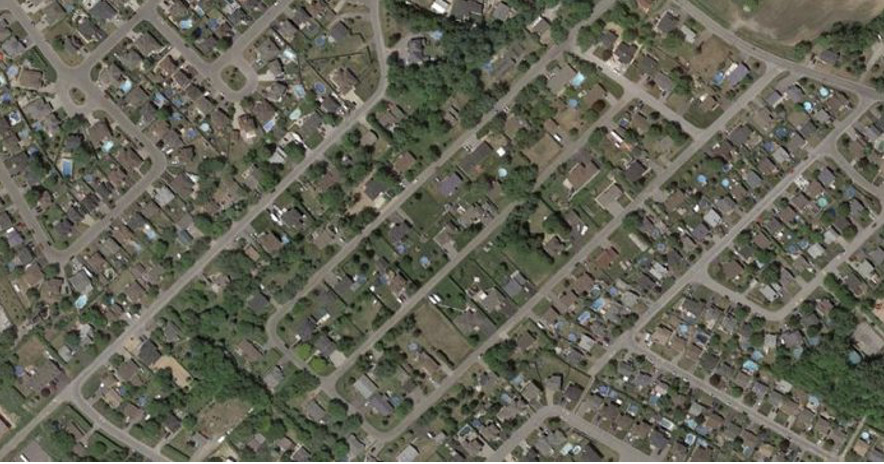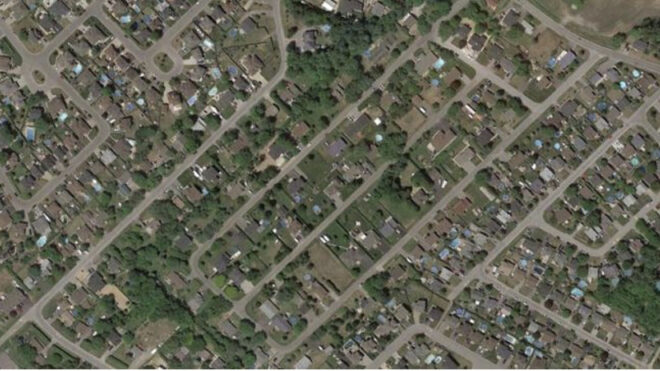
At present, the procedure for the issuance of building permits in most of the regions of the country which are outside the town plan (it is estimated that this percentage exceeds 90%) is frozen for plots of 750 m2, 1,200 m2 and 2,000 m2, even though the hourglass is almost empty and from 2023, building on these plots will no longer be permitted, according to the statement of the President of the Panhellenic Association of Agronomists-Topographers, Michalis Kalogiannakis. It should be noted that plots under 4.000 m2 (namely 750, 1,200 and 2,000 m2) have been accorded a transitional two-year period during which the owners can proceed to the issuance of building permits, because, as mentioned above, building on these plots will no longer be permitted in accordance with the relevant 2020 Law (Law 4759/2020).
According to Michalis Kalogiannakis, although the hourglass is emptying, this first year (which finishes in a month) for the vast majority of owners who own such plots has elapsed, but they have been unable to proceed to the issuance of the building permits.
So, the question arises: Why is causing this? According to the President of the Panhellenic Association of Agronomists-Topographers, there are three reasons behind this: The first one concerns the fact that the procedure of determination of the country’s road network has only been completed for a few roads so far.
THE DECISION OF THE COUNCIL OF STATE
To issue a building permit on these plots, the latter must have a façade on a designated road. The decision of the Council of State (848/2018) annulled all the existing building decisions of the Self-Administration regarding the designation of municipal, rural and community roads and prohibited the issuance of new ones. These decisions concern the majority of such roads.
“Unfortunately, the procedure of determination of the road network has not started yeat and it appears that much more time will be needed”, mentions Michalis Kalogiannakis. “In some cases, if the respective decentralized administrations of the regions (not the electoral regions) decide to act, the procedure, which can be applied individually, has been determined. It is certain, however, that with this procedure, the designation of the first road will not be completed before the end of 2022”.
THE FOREST MAP
The second reason, according to the President of the Agronomists-Topographers, is the delay in the ratification of the forest maps and the review of the objections that have been raised. In the regions where the forest maps have been partially ratified and were posted four years ago, the review of the objections is progressing very slowly”. In these regions, where the procedure for the submission of objections concerning the forest maps is ongoing, the recent extension, which was given until spring, actually freezes any possibility of issuing permits.
“If we add the delay in the review of the objections which will be filed and the delay in the ratification of the forest map, it will be unexpected if the procedure is completed until the end of 2022”.
THE URBAN PLANNING OFFICES
According to the President, what leads to significant delays in the issuance of building permits is the understaffing of some urban planning offices combined to overregulation as well as the pandemic.
Now, in these new settings, the maximum allowance for the building of a residence in regions outside the town plan (until the end of 2023), is determined between 86 to 186 m2, while the issuance of the building permits for these regions will have an additional charge of 250-5,000 Euro.
More specifically: The building allowance for 2 stremma plots cannot exceed 186 m2, while for plots of 1,200 m2 to 2,000 m2 the building allowance is limited to 136 m2. For smaller plots from 750 m2 to 1,200 m2, the building allowance is 86 m2.
The building permits for plots of 750 m2, 1,200 m2 and 2 stremma, are burdened with a fee of 5% on the cost of the conventional budget or five thousandths (5%ο) if the analytical budget is used. The amount cannot be less than 250 Euro and cannot exceed 5,000 Euro.
And the question arises: What happens to those who do not get a building permit within this transitional two-year period? According to sources from the Ministry of Environment, these owners will be able to build depending on the local or special urban plans which will be conducted. The objective is to cover Greece with local or urban plans until 2025.
Prokopis Giogiakas
November 15, 2021
Εκτός σχεδίου: Τελειώνει άπρακτα ο χρόνος για την έκδοση οικοδομικών αδειών • Οι 3 αιτίες & η επόμενη μέρα
Παγωμένες είναι αυτή τη στιγμή οι εκδόσεις οικοδομικών αδειών στις περισσότερες εκτός σχεδίου περιοχές της χώρας (εκτιμάται πως το ποσοστό υπερβαίνει το 90%) για οικόπεδα 750 τ.μ., 1.200 τ.μ. και 2.000 τ.μ. Και αυτό παρά το γεγονός ότι η… κλεψύδρα αδειάζει και από το 2023 δεν θα επιτρέπεται η δόμηση στα οικόπεδα αυτά. Αυτό υποστηρίζει μιλώντας στα «ΝΕΑ» ο πρόεδρος του Πανελληνίου Συλλόγου Διπλωματούχων Αγρονόμων -Τοπογράφων Μηχανικών Μιχάλης Καλογιαννάκης. Σημειώνεται πως για τα οικόπεδα κάτω των τεσσάρων στρεμμάτων (δηλαδή 750, 1.200 και 2.000 τ.μ.) δόθηκε μια μεταβατική διετία προκειμένου όσοι ιδιοκτήτες το επιθυμούν να προχωρήσουν στην έκδοση οικοδομικών αδειών. Και αυτό επειδή, όπως προαναφέρθηκε, η δόμηση σε αυτά τα οικόπεδα δεν θα επιτρέπεται με βάση τα όσα προβλέπονται από τον σχετικό νόμο του 2020 (είναι ο Ν. 4759/2020).
Αν και η κλεψύδρα αδειάζει, σύμφωνα με τον Μιχάλη Καλογιαννάκη, αυτός ο πρώτος χρόνος (που ολοκληρώνεται σε έναν μήνα) για τη συντριπτική πλειονότητα των ιδιοκτητών που διαθέτουν τέτοιου είδους οικόπεδα έχει περάσει χωρίς αυτοί να μπορούν να κάνουν κάτι προς την κατεύθυνση της έκδοσης οικοδομικών αδειών.
Τίθεται έτσι το ερώτημα: Γιατί συμβαίνει αυτό; Κατά τον πρόεδρο του Πανελληνίου Συλλόγου Διπλωματούχων Αγρονόμων – Τοπογράφων Μηχανικών, αυτό συμβαίνει για τρεις λόγους: Ο πρώτος αφορά τον καθορισμό του οδικού δικτύου της χώρας, που μέχρι στιγμής έχει γίνει μόνο για λίγους δρόμους.
Η ΑΠΟΦΑΣΗ ΤΟΥ ΣτΕ
Για να εκδοθεί άδεια δόμησης σε αυτά τα αγροτεμάχια θα πρέπει να έχουν πρόσωπο σε χαρακτηρισμένο δρόμο. Η απόφαση του Συμβουλίου της Επικρατείας (848/2018) ακύρωσε όλες τις υπάρχουσες οικοδομικές αποφάσεις της Αυτοδιοίκησης για την αναγνώριση δημοτικών, αγροτικών και κοινοτικών οδών και απαγόρευσε να εκδοθούν νέες. Οι αποφάσεις αυτές αφορούν την πλειονότητα των οδών αυτών.
«Δυστυχώς η διαδικασία καθορισμού του οδικού δικτύου για το σύνολό του δεν έχει ξεκινήσει ακόμη και φαίνεται πως θα απαιτηθεί αρκετός χρόνος» επισημαίνει ο Μιχάλης Καλογιαννάκης. «Σε ορισμένες περιπτώσεις, και εφόσον οι αντίστοιχες αποκεντρωμένες διοικήσεις των περιφερειών (όχι οι εκλεγμένες περιφέρειες) ενεργήσουν, ορίστηκε η διαδικασία η οποία μπορεί να ακολουθηθεί μεμονωμένα. Είναι πάντως σίγουρο πως για να χαρακτηριστεί πρώτη οδός με τη διαδικασία αυτή θα χρειαστεί να περάσει και το 2022».
ΟΙ ΔΑΣΙΚΟΙ ΧΑΡΤΕΣ
Ο δεύτερος λόγος, κατά τον πρόεδρο των Αγρονόμων -Τοπογράφων Μηχανικών, είναι η καθυστέρηση κύρωσης των δασικών χαρτών και εξέτασης των αντιρρήσεων που έχουν υποβληθεί. Όπως λέει, στις περιοχές που έχουν κυρωθεί μερικώς οι δασικοί χάρτες και είχαν αναρτηθεί πριν από τέσσερα χρόνια, η εξέταση των αντιρρήσεων «τρέχει με ρυθμούς χελώνας». Στις περιοχές αυτές, όπου η διαδικασία υποβολής αντιρρήσεων κατά δασικών χαρτών είναι σε εξέλιξη, η πρόσφατη παράταση που δόθηκε έως την άνοιξη στην ουσία παγώνει κάθε δυνατότητα αδειοδότησης.
«Αν συνυπολογιστεί και η καθυστέρηση εξέτασης των αντιρρήσεων που θα υποβληθούν, αλλά και της κύρωσης του δασικού χάρτη, θα είναι έκπληξη αν η διαδικασία ολοκληρωθεί έως το τέλος του 2022» συμπληρώνει.
ΟΙ ΠΟΛΕΟΔΟΜΙΕΣ
Σύμφωνα με τον ίδιο, είναι η υποστελέχωση ορισμένων πολεοδομιών, σε συνδυασμό με την πολυνομία αλλά και την πανδημία, που οδηγούν σε μεγάλες καθυστερήσεις στην έκδοση οικοδομικών αδειών.
Πλέον, με το νέο σκηνικό που έχει διαμορφωθεί, η ανώτατη επιτρεπόμενη δόμηση για κατοικία στις εκτός σχεδίου περιοχές (έως το τέλος του 2023) καθορίζεται από τα 86 έως τα 186 τ.μ., ενώ η έκδοση των οικοδομικών αδειών για τις περιοχές αυτές επιβαρύνεται με νέο τέλος 250-5.000 ευρώ.
Ειδικότερα: Η επιτρεπόμενη δόμηση σε οικόπεδα 2 στρεμμάτων δεν μπορεί να ξεπερνά τα 186 τ.μ., ενώ για τα οικόπεδα από 1.200 τ.μ. έως 2.000 τ.μ. η επιτρεπόμενη δόμηση περιορίζεται στα 136 τ.μ. Για τα μικρότερα οικόπεδα από 750 τ.μ. έως 1.200 τ.μ., η δόμηση διαμορφώνεται στα 86 τ.μ.
Σε ό,τι αφορά τις οικοδομικές άδειες για οικόπεδα 750 τ.μ., 1.200 τ.μ. και 2 στρεμμάτων, αυτές επιβαρύνονται με τέλος 5% επί του κόστους του συμβατικού προϋπολογισμού ή με πέντε τοις χιλίοις (5%ο) στην περίπτωση που γίνεται χρήση αναλυτικού προϋπολογισμού. Επί της ουσίας το ποσό δεν μπορεί να μικρότερο των 250 ευρώ ούτε μεγαλύτερο από τα 5.000 ευρώ.
Τίθεται έτσι το ερώτημα: Τι γίνεται με όσους δεν βγάλουν οικοδομική άδεια εντός της μεταβατικής περιόδου των δύο χρόνων; Σύμφωνα με πηγές του υπουργείου Περιβάλλοντος, αυτοί θα μπορούν να χτίσουν βάσει των όσων θα ορίσουν τα τοπικά ή ειδικά πολεοδομικά σχέδια που θα εκπονηθούν. Στόχος είναι να καλυφθεί όλη η Ελλάδα με τοπικά ή πολεοδομικά σχέδια μέχρι το 2025.
Προκόπης Γιόγιακας
15 Νοεμβρίου 2021

